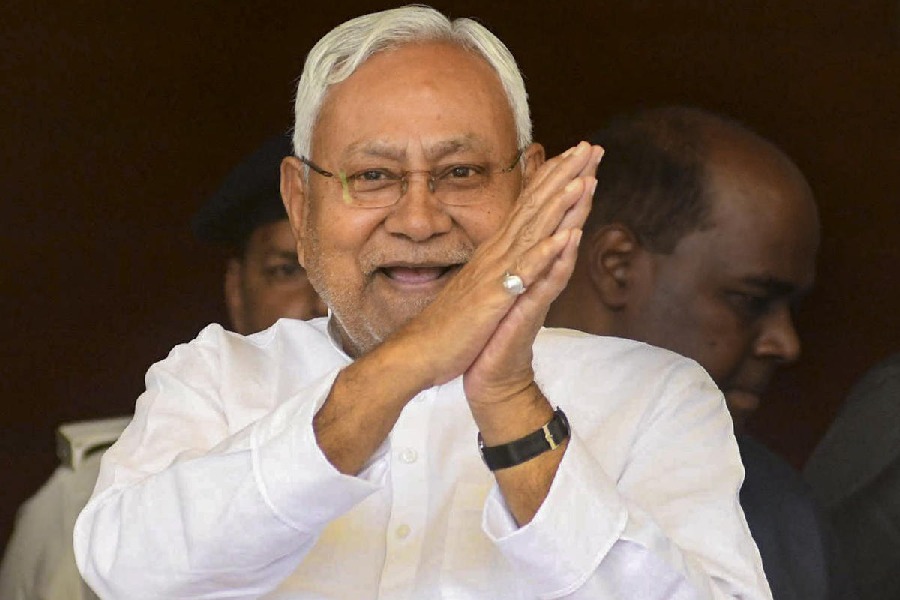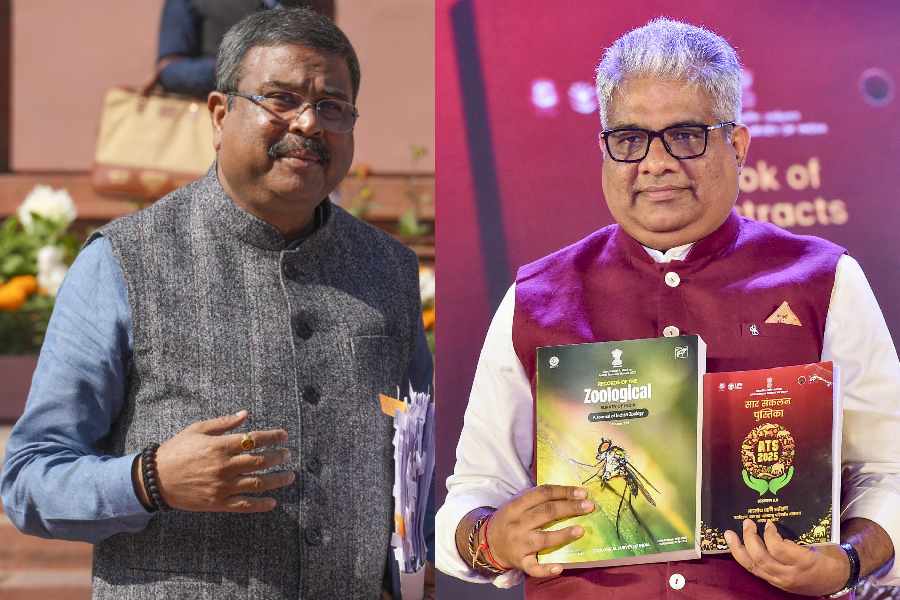 |
| Jogen Chowdhury (right) at the Singapore Arts Museum |
Singapore, July 5: Five years ago, it would have been difficult to spot a young Indian artist’s work in a gallery housed in an edgy Singapore neighbourhood better known for its underground gay nightlife and aboveground Peranakan eateries that serve Indonesian-Chinese cuisine.
When the gallery, Bodhi Art, opened quietly two years ago, it marked a new level of visibility for contemporary Indian art.
“Not so very long ago, Indian art in Singapore was being exhibited by housewives in private homes,” says Jasdeep Sandhu, curator of Gajah Gallery that until five years ago was one of only three galleries outside India to carry permanent representations of Indian art.
Things seem to be changing. India’s new global visibility has fuelled an increasing interest in modern Indian art here and not just among the expats.
Bodhi Art’s director Renuka Khilnani says a “new self-pride about Indian art is drawing people to pay top-dollar for it”.
Maybe not exactly top-dollar always (M.F. Husain’s canvas sold for $576,000 at a Christie’s sale in New York in March), but enough to create more than a few ripples.
Works of Indian artists travel to Singapore regularly now for shows in collaboration with Indian galleries and the Singapore Arts Museum, and events like the Singapore Arts Festival and the forthcoming Singapore Biennale 2006.
Running from March through April at Singapore’s hippest temple to the modern arts ? the Esplanade Theaters on the Bay ? was a show titled The Shape That Is featuring a local Filipino artist and India’s Bose Krishnamachari.
But though Khilnani says she has noted a significantly growing number of non-Indians among collectors and frequent visitors to her gallery, not everyone shares the enthusiasm.
Rajinder Jit Singh, a Malaysian mathematician who is now a full-time visual artist and an active art blogger, feels much of this new interest in Indian art is “hype”.
“Perhaps,” he adds, “most Indian artists tend to ride too much on their ethnicity to appeal to a wider non-Indian audience.”
Khilnani refutes this, citing the example of Atul Dodiya, who reworked the familiar tale of Sabari to address more globally-relevant themes during a residency at the Singapore Tyler Print Institute held in collaboration with Bodhi Art (in September 2005) and exhibited at the institute in January.
Sandhu of Gajah is also not as excited as Khilnani. “At this point in time, there is no wider appeal to a non-Indian audience,” he says. “Perhaps, with still more visibility, we (the galleries) will be able to change this and the merits of contemporary Indian art will come to the fore.”










